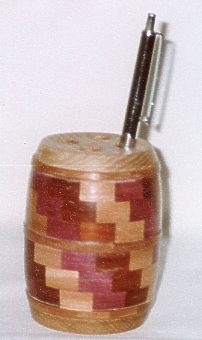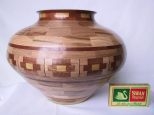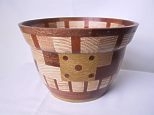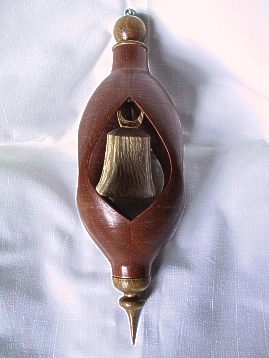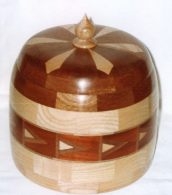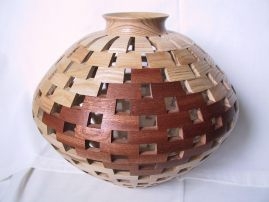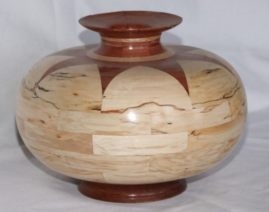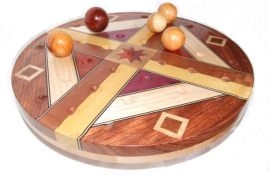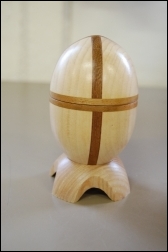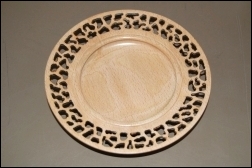Ian Hooker
Ian specialises in segmented work - which is the construction of bowls, vessels and other items from small pieces of wood which are individually cut into segments, sanded and glued together. The resulting item is then turned to it's final shape. This production method is extremely exacting and painstaking and demands very accurate joinery. If you get one segment wrong it can affect the appearance of the entire item.
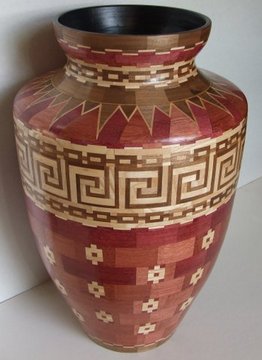 |
This was made as a commission. It stands 3ft. tall and contains over 1280 segments. It's constructed in four parts but finished whole with the aid of steady made from the wheels of a roller blade and the 1/2" box steel from a golf trolly. Both 'aids' purchased from car boot fairs for less than £6. It took nearly four weeks to build because of all the segments, but once whole - it was finished in a day. |
|
| The maths involved in creating this piece was the hardest part but it only took a week to actually make it. I only do one ring per day to ensure the glue has really gone off. This piece looks nice with a glass vase and flowers in the middle. When making items like this you have to ensure the inside has the same finish as the outer surfaces but, that's not too difficult, as it was made in two halves, put together then finished and polished. |
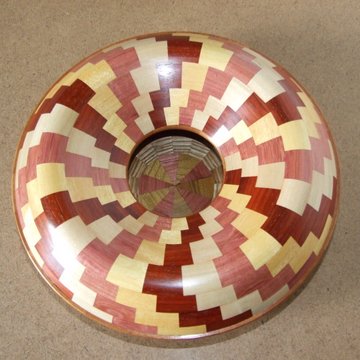 |
|
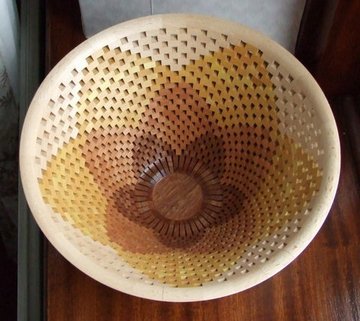 |
An open segmented bowl with 48 segments per layer and 22 layers. The white wood is Beech, yellow is Pau Amerello and the dark brown is Mahogany. The light brown wood was from a couple of old drawer sides I was given years ago! The hardest part is the cutting and holding of the bottom few layers - as the smallest is the size of a matchstick! To look right the joints must all be aligned precisely above each other. The finished wall thickness is 1/8". |
|
| A segmented vase. This is made mainly of Ash and Purpleheart with a lot of black and white veneers to emphasise the joints. Regarding the 'feature ring' (it's in the centre), I always decide first on the pattern and then build it up; then you'll know exactly the diameter of the circle it makes, and you can then properly design the remaining shape of your vase/ pot to take it and look right. |
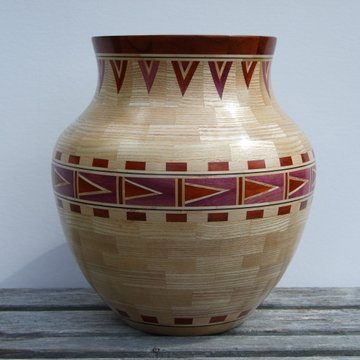 |
|
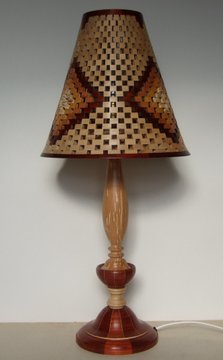 |
The outer shade was easy compared with working out how to build it into the inner bottom which is how it is attached to the lamp holder. The bottom is made from segmented Paduk, and the Stem from Spalted Alder. The shade is mainly Ash with Paduk, Pau Amerello and Mahogany. It looks lovely when lit in a dark room - but I'm told it's murder to dust! |
|
| Thuya Burr bowl with segmented Cocobolo rings at the top. Finish sanding this piece was quite difficult - as the burr was very soft when compared to the Cocobolo feature ring. |
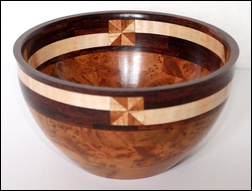 |
|
 |
Ash and Blackwood segmented 'castle' vase - notice the 'eyes' in the bottom rows of the 'windows'. There was a major problem encountered when finish sanding this piece - the black dust got embedded in the white Ash - frequent use of a 'tack cloth' was necessary to achieve the finish. |
|
| Segmented bowl in Ash, Purpleheart and African Blackwood - 12" diameter by 7" high | 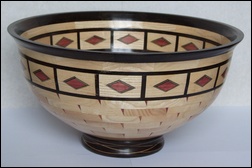 |
|
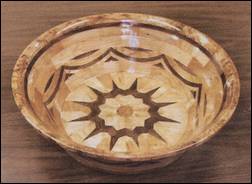 |
More segmented work - with complex base |
|
| Some other challenging pieces... |
||
| Made from a 2" x 10" diameter blank of Bubinga and cut with a router. The petals are held behind on 1/8" square pieces cut all at the same time and out of the one piece. Good fun and well worth trying. |
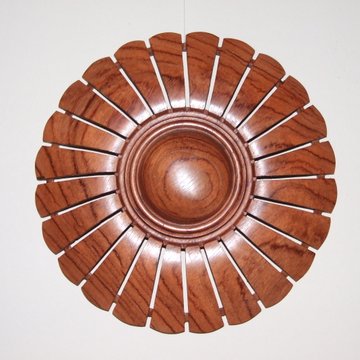 |
|
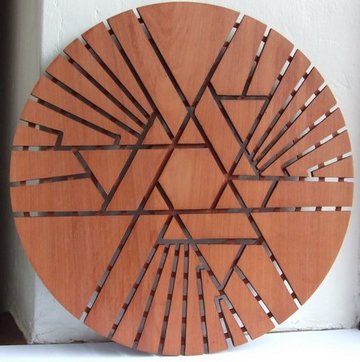 |
Made from a 10" diameter x 1" blank of Steamed Pear and cut with a router - using the same process as the Bubinga Flower (see above). Note the 1/8" rings behind are supporting the pieces. Aim for a thickness of no more than an 1/8" and use the smallest router cutter available - but take care as these can break easily. The biggest problem is the original mathematics to work out what you need to do! |
|
| This was for a club Show and Tell theme of "Space". This was my interpretation of two flying saucers around the moon - all made in Yew. Fun to do and good for testing your knowledge of different methods of holding pieces on the lathe. |
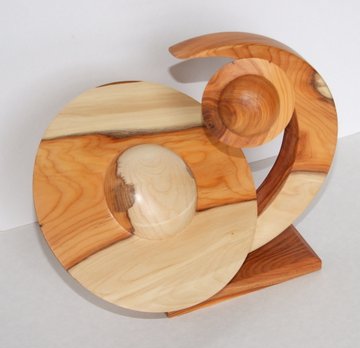 |
|
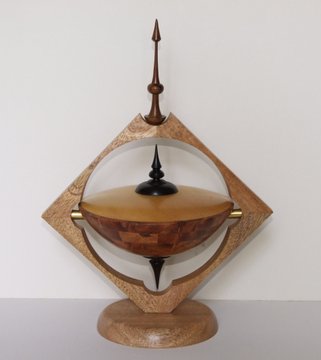 |
This item was made mainly from Pau Amerello and Thuya Burr - mounted on brass tube pivots which hang between a Mango frame. The finials are from Blackwood. This item has to look right with the bottom finial exactly pointing to the bottom angle joint of the frame and it took me a two attempts to get it right! The finish is cellulose sealer and good wax furniture polish. |
|
|
Examples of some of Ian's earlier work
|

